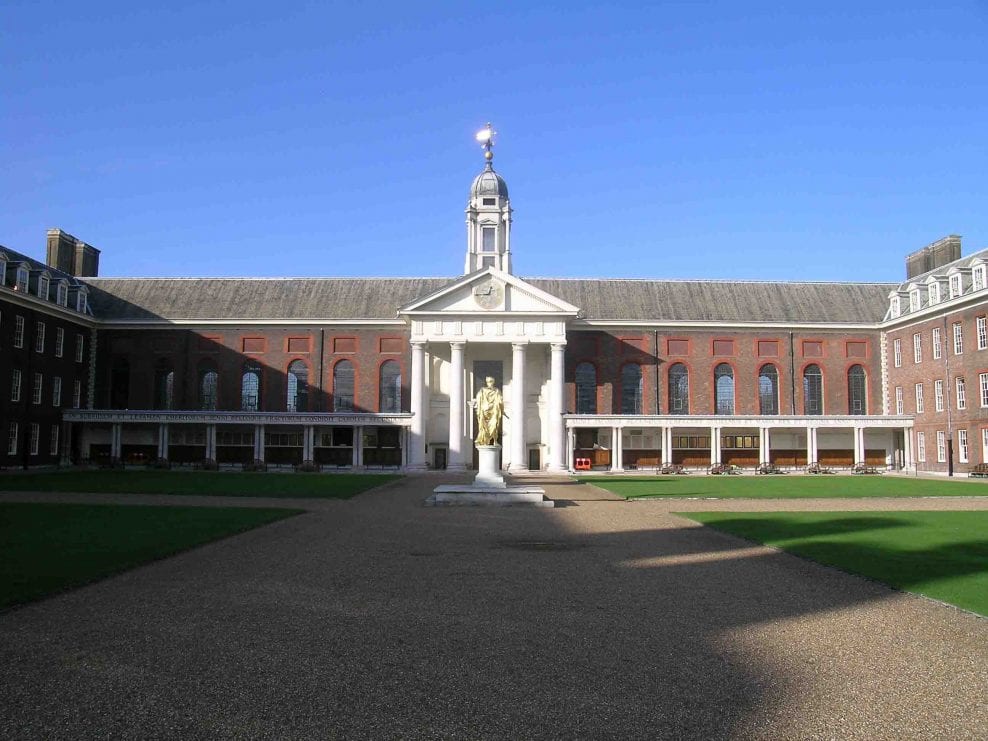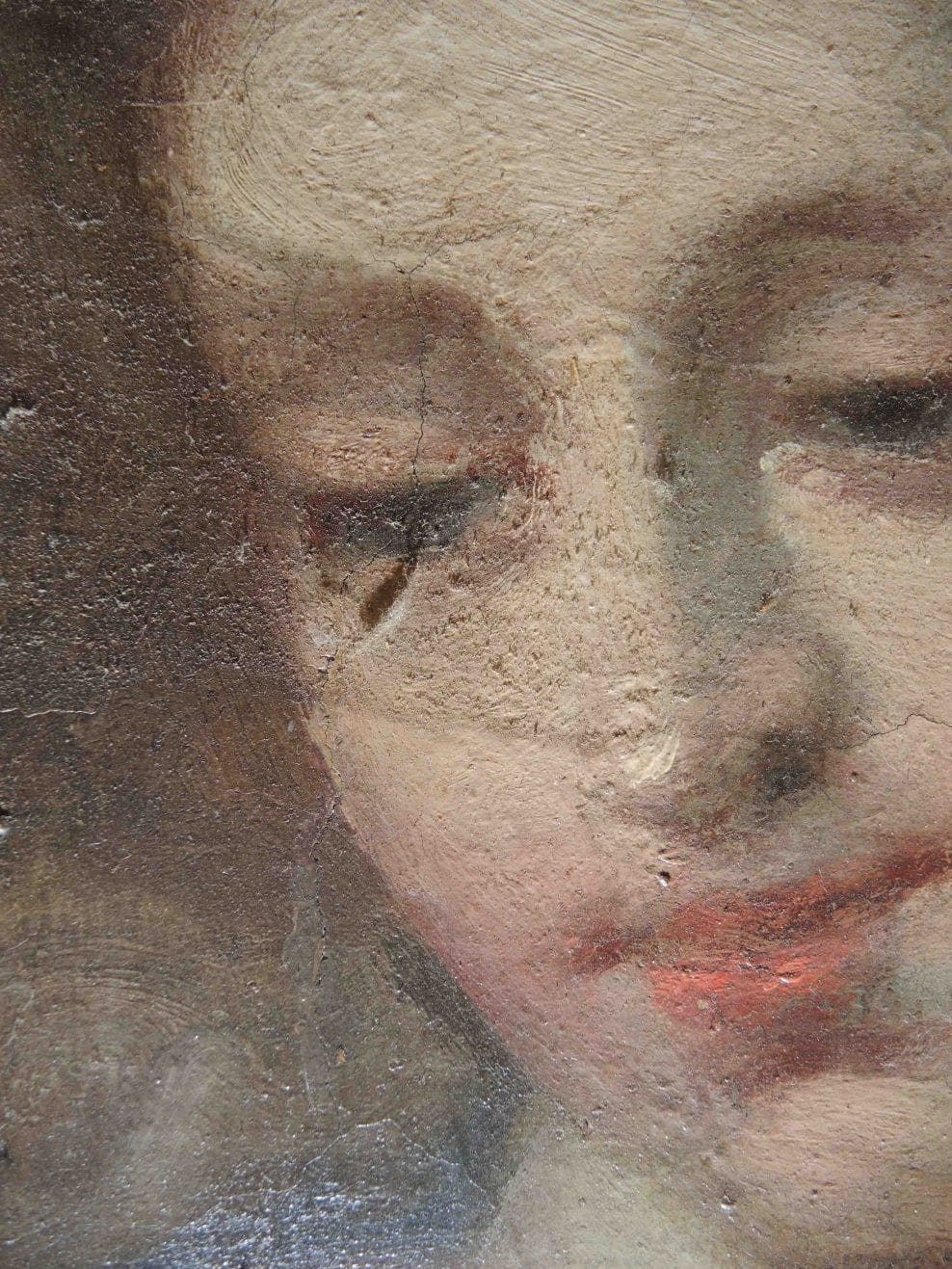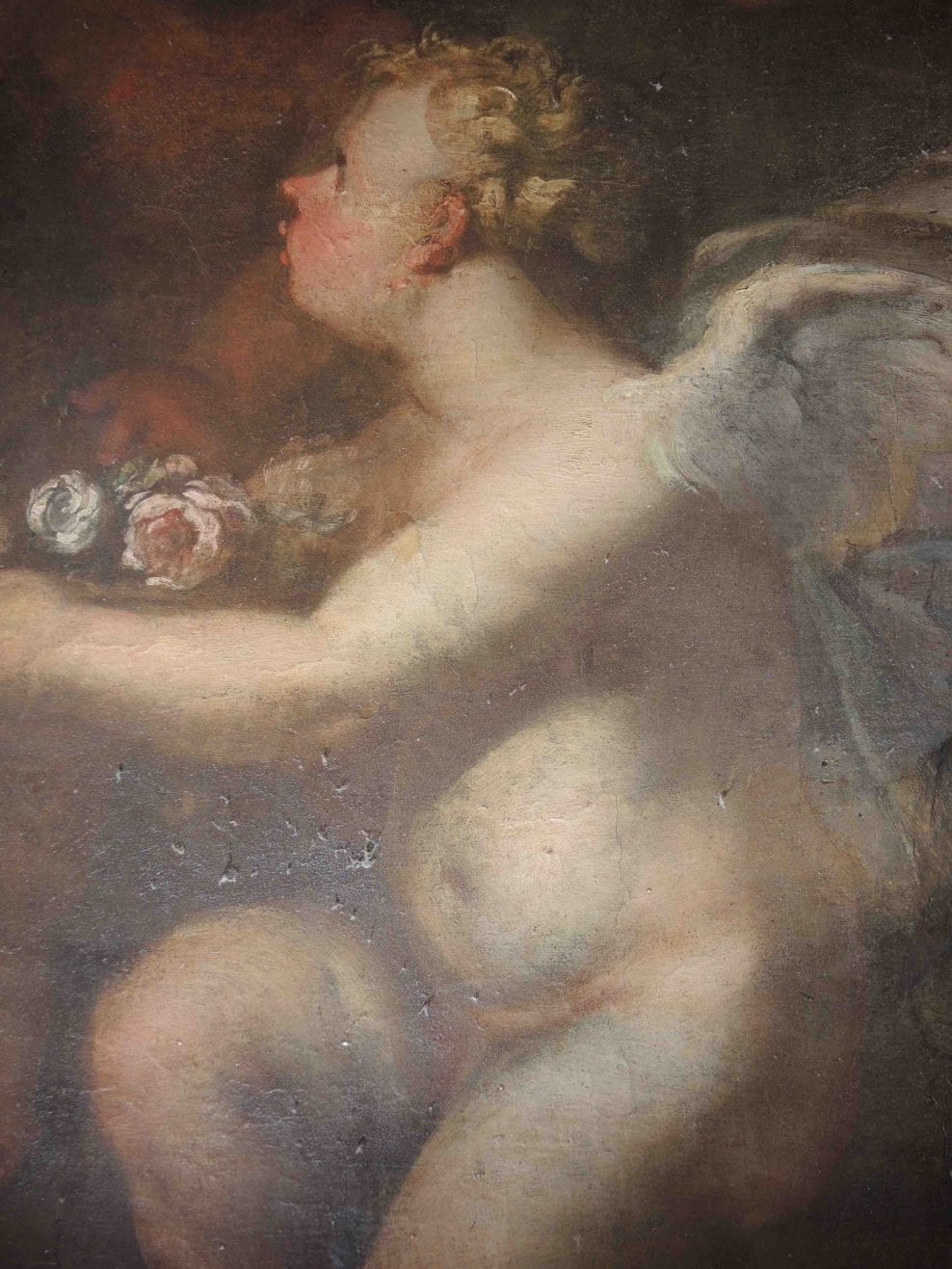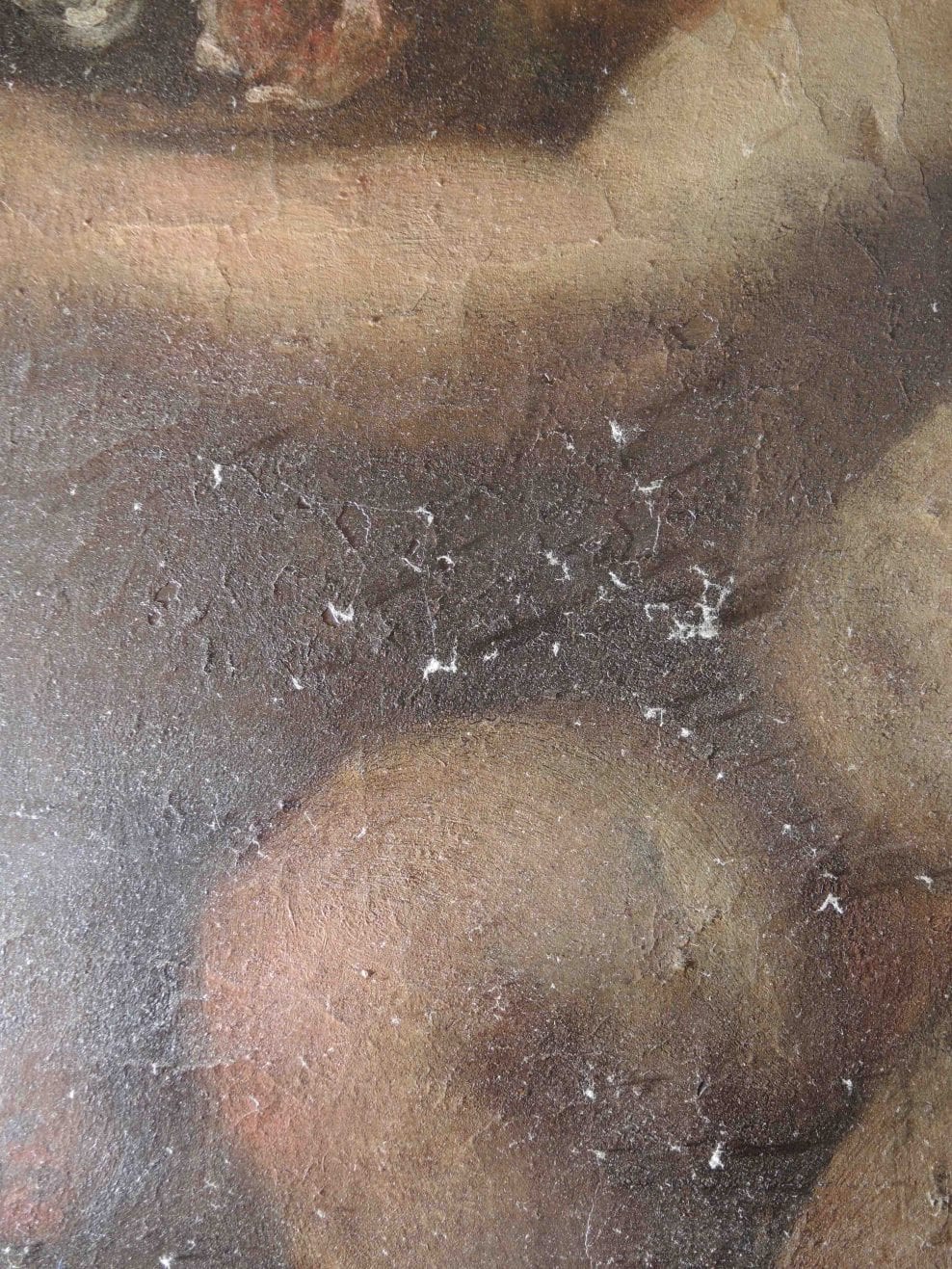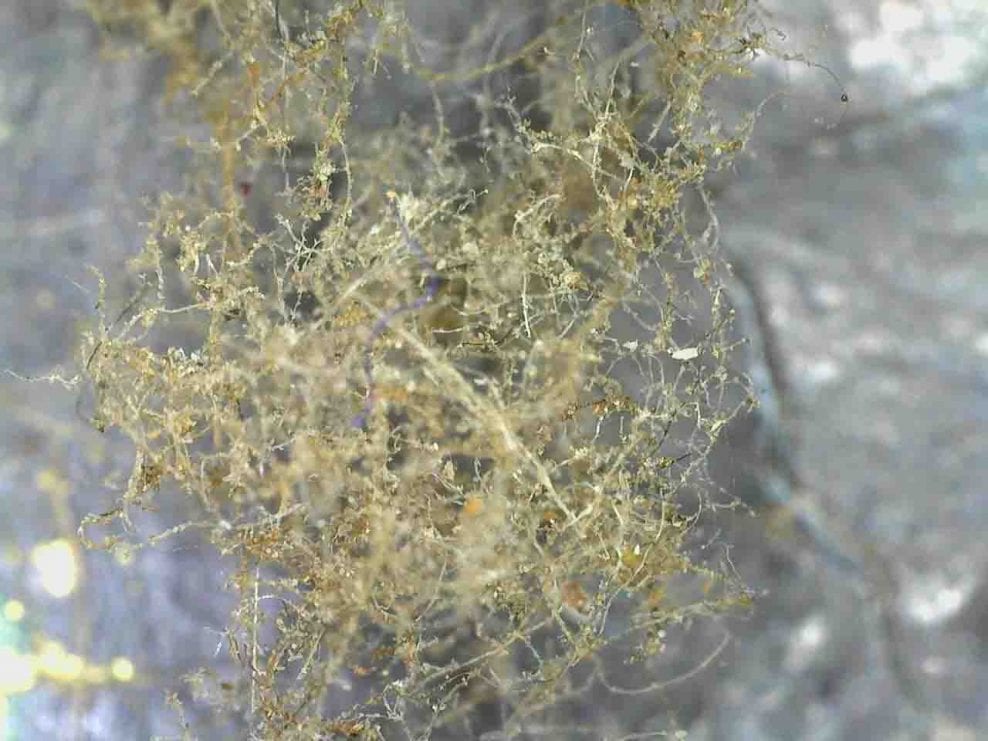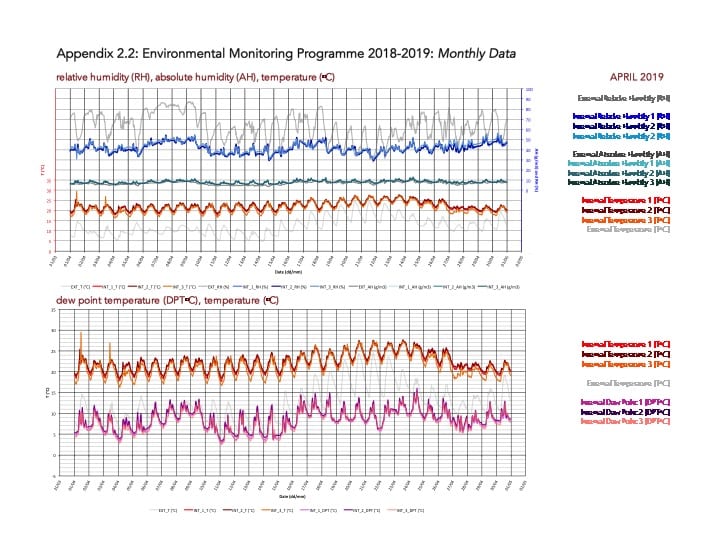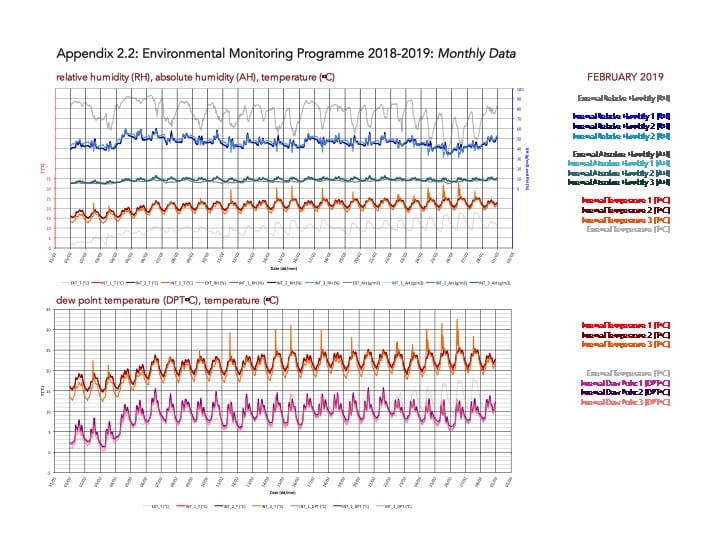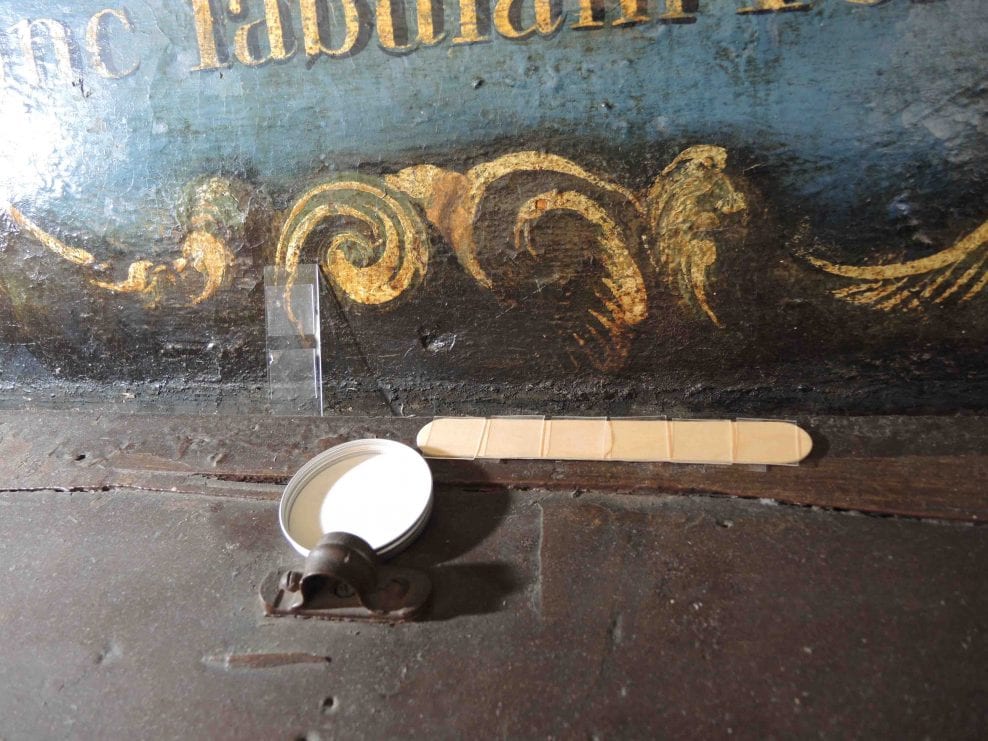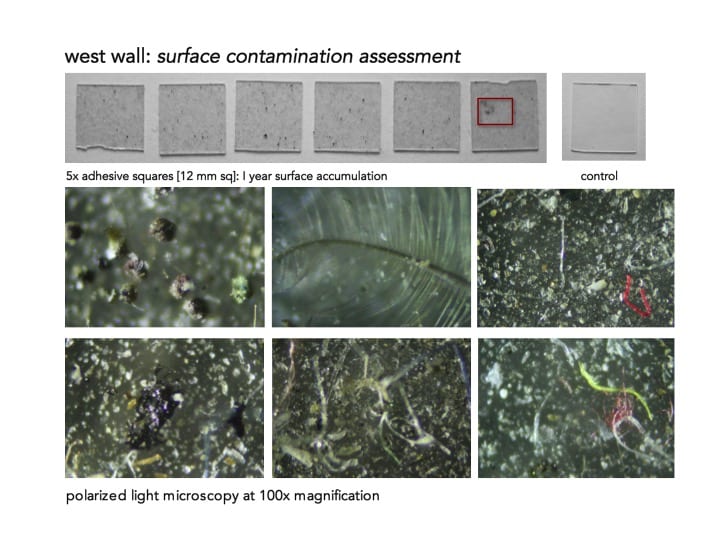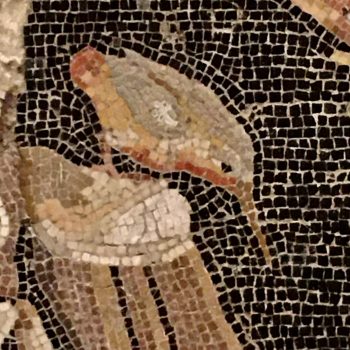Projects
Royal Chelsea Hospital, London
Great Hall mural: technical and condition investigations, environmental monitoring programme, and monitoring and assessment of effects of surface contamination
The Great Hall of the Royal Hospital, Chelsea, preserves a baroque mural of national importance. Covering the west end of Christopher Wren’s interior, it was commissioned in the late 1690s to celebrate the restoration of Charles II. Begun by the Italian artist, Antonio Verrio, with a team that included his then assistant, Gerard Lanscroon, the painting was completed by Henry Cooke. It shows Charles II triumphant on horseback, surrounded by allegorical figures, with the newly built hospital in the background.
The mural has a long history of restoration, paint failure and re-restoration. Technical and condition investigations carried out by Rickerby and Shekede in 2016 found that since the painting’s last conservation and cleaning only 12 years earlier, alarming paint flaking was occurring, and surface contaminants had accumulated substantially. In a separate undertaking, treatment was carried out to address these re-emergent problems.
Rickerby and Shekede were then commissioned to examine longer-term conservation options. Possibilities for controlling recurrent flaking are constrained by weaknesses within the painting stratigraphy. The regular use of the Great Hall for communal meals is also an unavoidable factor in creating environmental conditions that contribute both to paint flaking and surface contamination. At the same time, the painting cannot sustain further intensive re-treatment. Preventive and ameliorative measures needed to be identified. To guide decision-making, Rickerby and Shekede carried out two phases of environmental monitoring (2016-2017 and 2018-2019), and a period of monitoring to assess rates and types of surface contamination (2018-2019).
While many circumstances that contribute to unstable environmental conditions and rapid surface contamination cannot be eradicated, findings indicated specific areas where improvements can be made. A regular timetable of inspection and superficial cleaning was also recommended. The aims of this are to remove deposited contaminants before they become too bonded, and to assess and address flaking problems before they become too advanced. Balancing preventive and remedial conservation measures are key to the future preservation of the mural.
